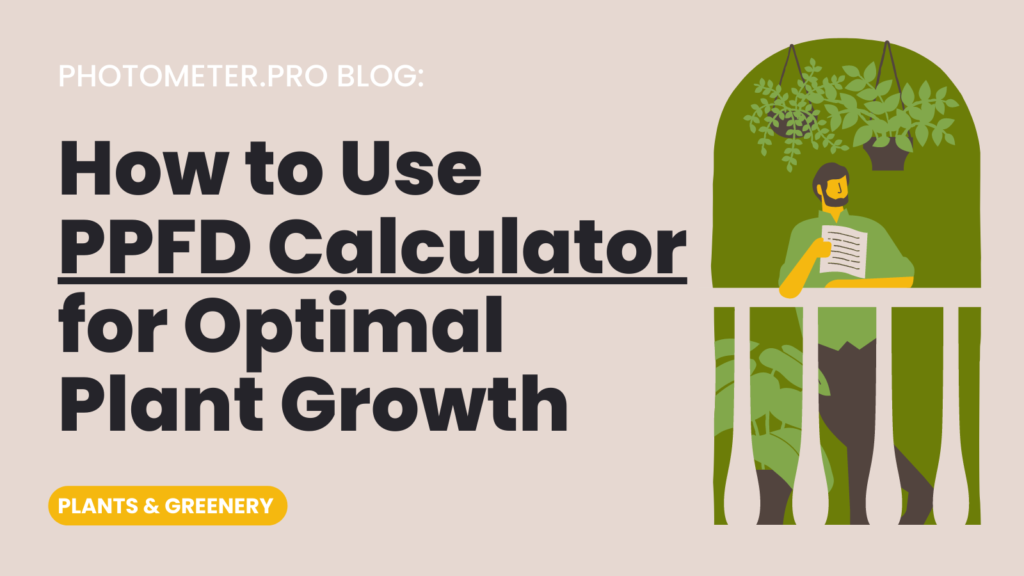Growing with confidence is the key to your success. It’s the difference between feeling like you’re going to succeed and not knowing if your plants will make it. That’s why I’ve put together this guide on how to use a PPFD calculator for growing plants successfully.
What is a PPFD Calculator?
PPFD is the amount of light that falls on a given surface. It can be measured in micromoles per square meter per second (μmol/m2/s). Using a photosynthesis light meter, you can measure how much sunlight your plants receive during different times of day and seasons. Once you know how much PPFD your plants are receiving, you can adjust their environment accordingly so they grow as fast as possible!
How to use a PPFD calculator?
To use a PPFD calculator, you first need to understand what it is and how it works. A PPFD (or Photosynthetic Photon Flux Density) is the amount of light in micromoles per meter squared per second.
A PPFD calculator uses this measurement to determine how much light your plant needs based on its stage of growth and type of plant. By using one of these calculators, you can ensure that your plants receive enough light for optimal growth.
Understanding the results from your PPFD calculator.
PPFD is a measure of light intensity at the canopy level, and it can be measured with a handheld meter or with a fixed meter. The most common way to measure PPFD is by using an ultraviolet (UV) sensor that detects how much UV light is present in your grow room or greenhouse. This device measures how much UV light is hitting your plant canopy, which correlates with PAR (Photosynthetically Active Radiation).
Here are some things you should know about PPFD:
- PPFD measures how much light reaches your plants’ leaves rather than other factors such as heat or humidity levels in the air around them. It’s important to understand this distinction because it means that if you use an inaccurate reading from your calculator when calculating how many watts per square foot of grow space you need for optimal growth conditions, then this could result in poor growth outcomes!

The benefits of using a PPFD calculator.
- Increases yields.
- Improves quality.
- Reduces energy use.
- Reduces environmental impact.
- Improves your health!
Taking the time to understand your grow space and lighting can increase yields and improve quality.
Plants are subject to many limiting factors in their environment, and the amount of light they receive is one of the most important. The amount of photosynthetically active photon flux density (PPFD) your plants receive is directly related to how much energy they can harvest from the sun. This means that optimizing your lighting system will help you optimize plant growth and yield quality.
The best way to do this is by using a PPFD calculator like ours! 🙂
These tools allow you to input details about your grow space and then tell you how much light each part gets based on its location relative to other parts within that space so that no area goes without adequate illumination while others get too much exposure which could lead them into trouble like “light burn”–a condition where leaves appear brown because they’ve been overexposed for too long or too often
Conclusion
With a little bit of knowledge, you can make sure that your plants are getting the light they need to thrive. By using a PPFD calculator and understanding the results, you can ensure that your plants receive the right amount of light at each stage of growth. This will help them grow faster and produce higher yields than ever before!
Editorial Team
I help fin-tech digital product teams to create amazing experiences by crafting top-level UI/UX.



